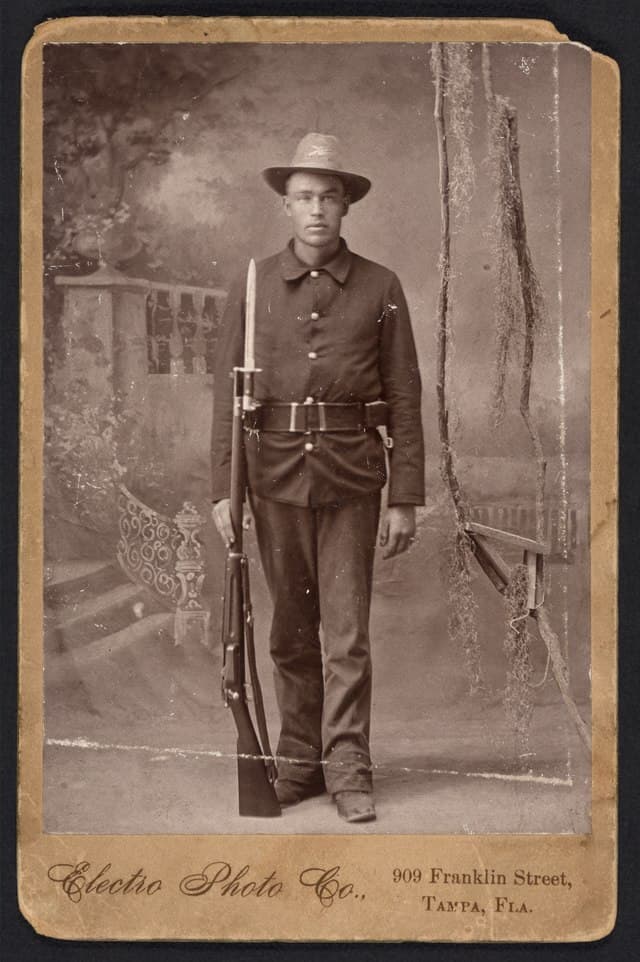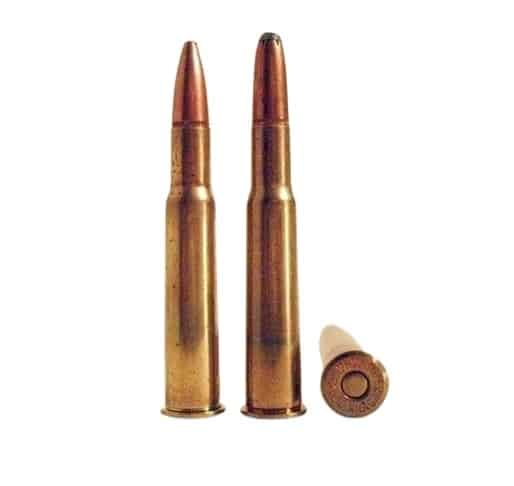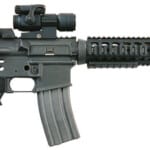
Introduction
The Krag-Jorgensen rifle stands as one of the most fascinating bolt-action rifles of the late 19th and early 20th centuries. As the first bolt-action rifle officially adopted by the United States military, the Krag played a pivotal role in shaping American small arms development. Its unique side-loading magazine, buttery-smooth bolt action, and historical battlefield service make it a highly sought-after collector’s item today. Though ultimately replaced, the Krag remains a milestone in military firearms history, offering valuable insights into the evolution of combat rifles.
Origins and Design: The European Influence
The Krag-Jorgensen rifle was developed in Norway by Ole Herman Johannes Krag and Erik Jorgensen in the late 19th century. Their goal was to create a bolt-action repeating rifle that balanced reliability, smooth operation, and innovative magazine functionality. The rifle was first adopted by Norway in 1894, followed by Denmark in 1889, and later the United States in 1892.
A key feature that set the Krag apart was its hinged box magazine, which allowed individual rounds to be inserted without cycling the bolt. While this made topping off the magazine convenient, it limited rapid reloading compared to the stripper clip-fed Mauser system. The Krag’s single locking lug also made it less robust than competing bolt-action rifles, restricting its ability to handle high-pressure ammunition.
Manufacturing and Production
The Krag-Jorgensen was manufactured in three primary locations:
- Norway – Produced at Kongsberg Våpenfabrikk, the Norwegian Krag was chambered in 6.5×55mm Swedish, a flat-shooting, low-recoil cartridge that would prove highly effective in long-range shooting.
- Denmark – Manufactured at Copenhagen Arsenal, the Danish Krag was chambered in 8×58mmR Danish, a rimmed cartridge with ballistics similar to early Mauser rounds.
- United States – Built at Springfield Armory from 1894 to 1903, the American Krag was chambered in .30-40 Krag (.30 Army). Over 500,000 units were produced in multiple variants, including the Model 1892, 1896, 1898, and 1899 Carbine.
Combat History and Service Use

The U.S. Army’s adoption of the Krag-Jorgensen in 1892 came after rigorous military trials, where it outperformed contemporary designs such as the Mauser, Mannlicher, and Lee rifles. However, its true test came in the Spanish-American War (1898) and the Philippine-American War (1899-1902).
The Spanish-American War and the Mauser Rivalry
During the Battle of San Juan Hill (1898), American forces armed with Krags faced Spanish troops equipped with the Mauser Model 1893, chambered in 7×57mm Mauser. The superiority of the Mauser’s stripper clip-fed magazine and higher-pressure cartridge became painfully evident:
- The Krag’s side-loading magazine was slow to reload under combat conditions compared to the Mauser’s five-round clip system.
- The Mauser’s 7×57mm cartridge offered higher velocity and flatter trajectory, making it more effective at range.
- The Mauser’s dual-lug bolt design provided greater strength and durability, allowing it to handle more powerful loads.
These factors directly influenced the U.S. Army’s decision to replace the Krag with a new rifle incorporating Mauser-inspired features: the Springfield M1903.
Use in Norway and Denmark
In Norway, the Krag remained in service until World War II, when it saw combat against the German invasion in 1940. Many Norwegian Krags were later repurposed by German occupation forces. Denmark’s Krag rifles served a similar extended role into the early 20th century.
U.S. Service Beyond Replacement
Even after the Springfield M1903 replaced the Krag, it remained in secondary service through World War I, particularly for training and National Guard units. During World War II, Krags were issued to British Home Guard units as emergency-use rifles.
Ammunition and Ballistics

The Krag-Jorgensen was chambered in different cartridges depending on country of use:
- Norwegian Krag (M1894): Chambered in 6.5×55mm Swedish (2,400-2,700 fps, 2,000-2,300 ft-lbs energy).
- Danish Krag (M1889): Chambered in 8×58mmR Danish (2,200-2,500 fps, 2,200-2,800 ft-lbs energy).
- U.S. Krag (M1892-1898): Chambered in .30-40 Krag (.30 Army) (2,000-2,200 fps, 2,000-2,500 ft-lbs energy).
While the .30-40 Krag was revolutionary as one of the first smokeless powder cartridges used by the U.S. military, it was quickly overshadowed by high-pressure Mauser cartridges.
Strengths and Weaknesses
Advantages:
✅ Exceptionally smooth bolt action – The Krag’s silky cycling remains one of the finest ever designed.
✅ Highly accurate – Known for excellent long-range precision, making it a favorite among marksmen.
✅ Top-off magazine loading – Unlike Mauser rifles, Krags allowed for individual round reloading without opening the bolt.
Disadvantages:
❌ Slow reload speed – The side-loading gate was cumbersome compared to stripper clips.
❌ Weak single-lug bolt – The single locking lug limited pressure tolerance, restricting ammunition improvements.
❌ Inferior combat durability – Compared to Mausers, the Krag rifle had more fragile parts and lower sustained fire capability.
Legacy and Collectibility
Today, the Krag-Jorgensen rifle is highly prized among collectors, particularly the U.S. Model 1896 Carbines, which are rare and valuable. Many surviving Krag rifles have been sporterized, reducing their original military configuration’s collector value.
- Unmodified Norwegian and U.S. Krags command high prices.
- Danish Krags are rarer due to lower production numbers.
- Sporterized models are common but less desirable for collectors.
Conclusion: The Krag’s Place in History
The Krag-Jorgensen rifle represents a pivotal moment in military firearm evolution, bridging the gap between single-shot rifles and the modern bolt-action era. Though its design flaws were exposed by combat, it remains an engineering marvel, beloved for its smooth action, accuracy, and historical significance.
While ultimately overshadowed by the Mauser, the Krag rifle’s influence lives on in collectors’ circles and firearms history. Its story—one of innovation, battlefield lessons, and technological progress—cements its place as one of the most iconic bolt-action rifles ever produced.
Discussion forums on the Krag rifle can be found here.
Read more about the Krag rifle here:



If you know of any forums or sites that should be referenced on this listing, please let us know here.




